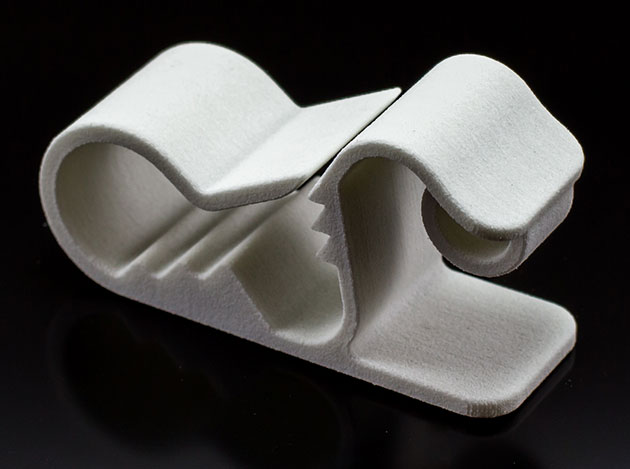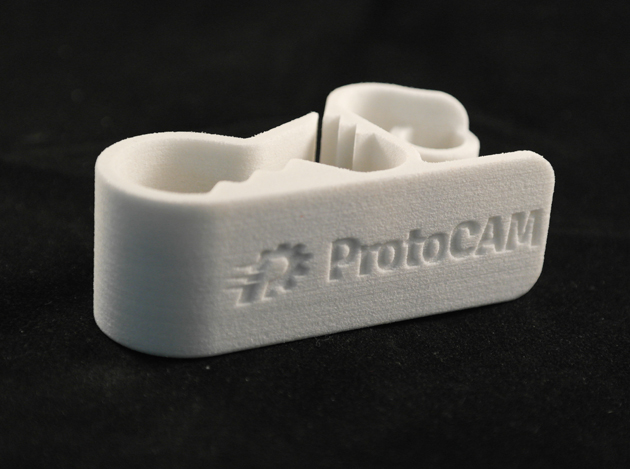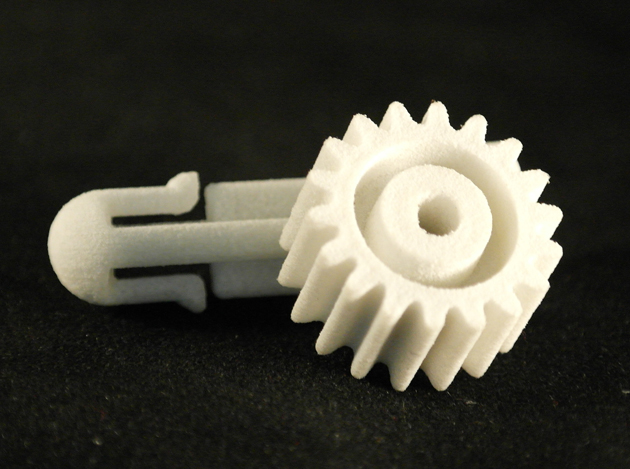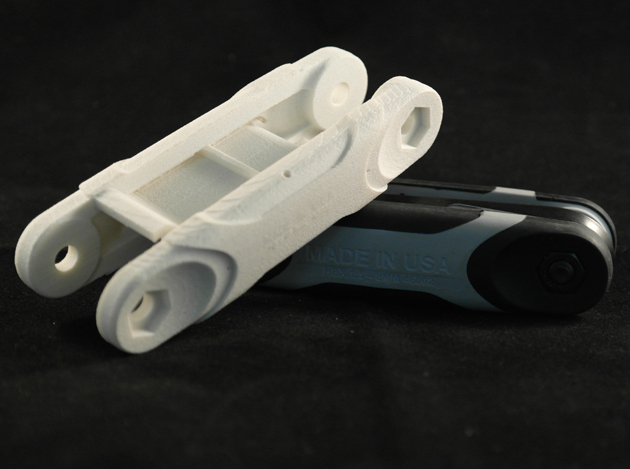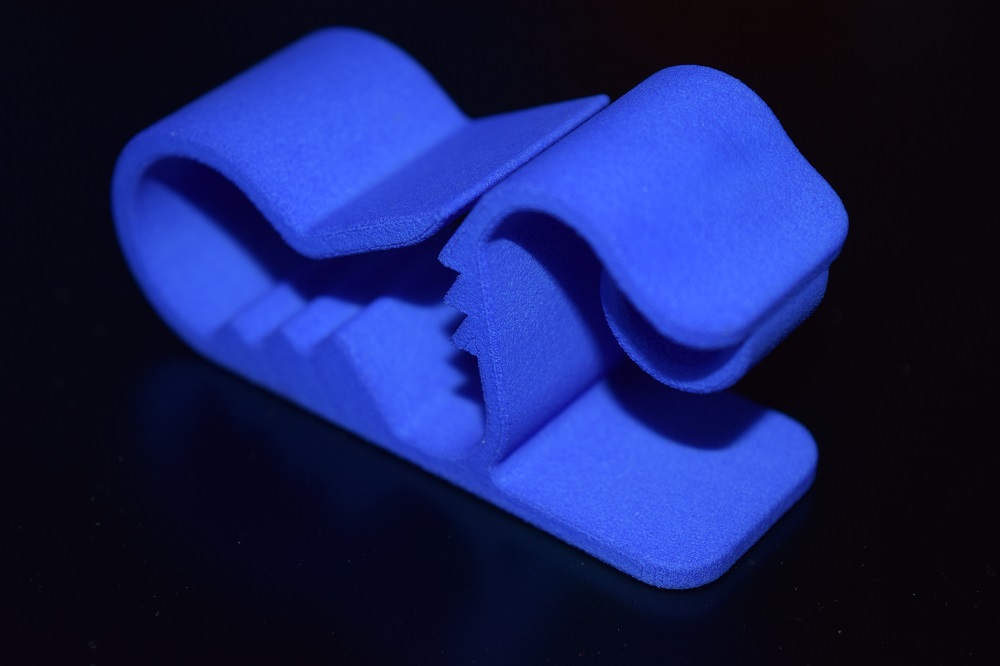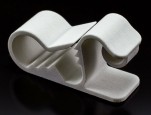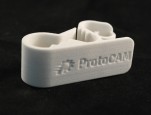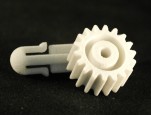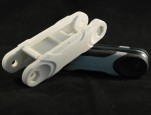In selective laser sintering (commonly known as “SLS” or “LS”), 3D parts are created by fusing (“sintering”) powdered materials with an infrared laser beam. The result is strong, durable, and machinable parts with thermoplastic material properties similar to those of injection molded prototypes.
The ProtoCAM Distinction
Here at ProtoCAM, we do selective laser sintering differently. Our experienced engineers work with our customers on their unique SLS projects to understand exactly what their goals are and what they would like their end product to be. The ProtoCAM Distinction means that we’re available throughout the entire SLS additive manufacturing process, from initial idea to end product, and we have the capabilities and know-how to guide any project–from prototype to production–to completion.
Your personal project engineer is regularly available to assist you in choosing a material, technology, process, post-processing method, and more, and our friendly customer service representatives can update you on your project timeline, cost, and delivery requirements. Because we’re ISO 9001:2015 certified, you can be assured that your SLS prototypes and parts will be completed according to our high quality standards and produced and delivered to you as quickly as possible, with continuous improvement being a central goal to our facility’s procedures in order to meet our customers’ ever-evolving requirements. Our instant quoting platform means you can order your parts immediately, while our engineer-assisted quoting form allows you to connect further with our engineers on your more in-depth project, and with each order placed, you can be assured that we’re always working towards more sustainable and environmentally-friendly standards of material disposal and recycling, packaging methods, and more.
In offering our selective laser sintering services, we utilize several large-frame systems produced by 3D Systems, which have a build envelope up to 27.5” x 15.0” x 22.0”. Our printers can be used to create durable parts in a variety of materials including high durability heat and chemical resistant
thermoplastics; see our Selective Laser Sintering Material Data list below for more details on all the materials we have available. SLS also offers high output possibilities and the ability to creative complex geometries with no supports necessary.
Read on to learn all ProtoCAM’s unique selective laser sintering services, or request a quote now to start experiencing the ProtoCAM Distinction for yourself.
What is Selective Laser Sintering
The use of SLS 3D printing (commonly called SLS prototyping or 3D SLS prototyping) is ideal for product prototypes that require exceptional strength or must closely approximate the properties of thermoplastics.
In SLS, three-dimensional parts are created by fusing (“sintering”) powdered thermoplastic materials such as nylon and elastomers with the heat from an infrared laser beam. Thin powder layers are repeatedly laser sintered, creating the desired 3D piece based on a 3D CAD model.
Selective Laser Sintering Tolerances
The technology has a general tolerance of +/- 0.005″ for 1st inch plus +/- 0.002″ for each add inch.
Need to compare technology tolerances? Click here to view our tolerance comparison chart.
Selective Laser Sintering in Action
Selective Laser Sintering Case Studies & Blogs
As we produce such a wide variety of products and projects for many different markets and industries using our selective laser sintering technology, we like to showcase all the unique ways SLS can be utilized to create end products and SLS prototypes. Check out some of the below case studies to experience the multi-faceted capabilities inherent with choosing SLS from ProtoCAM!
Ask ProtoMAN: Additive Manufacturing in the Aerospace Industry
Ask ProtoMAN: What is Selective Laser Sintering
Selective Laser Sintering: A Featured Technique
Auto Industry Additive Manufacturing
Prosthesis Development Case Study
Additive Manufacturing Dimensional Tolerances
SLS vs. SLA
There are several key differences between parts created using SLS and parts created with stereolithography (SLA). These include:
Prototype strength
SLS parts and prototypes are generally stronger and more durable than SLA parts.
Material properties
SLS allows product prototypes to be created with material properties similar to those of injection molded prototypes.
Surface finish
SLS parts have a slightly grainy finish, unlike SLA prototypes, which are smoother.
Machining properties
It is easier to machine parts created using SLS than those created using SLA.
Material choice
SLS allows for product prototypes in many different thermoplastic materials.
Post-completion processing
There is typically very little (if any) processing required after the SLS process is completed.
Typical Selective Laser Sintering Use Cases
| Machine prototypes | Form/fit models | Architectural models |
| Performance testing | Design verification | Click here to see available finishes |

